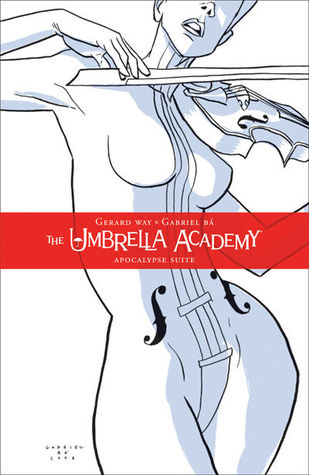
Sadly I couldn't un-watch the Netflix miniseries that was based on this comic before reading it so my palate was tainted. When consuming media adapted from other media I've already consumed I generally try to separate the two works to judge them on their own merits, in this case I found it especially difficult to do so. Having seen the TV series I must say I really enjoyed this comic. It had great artwork and really true-to-character moments for these characters I had already gotten to know through their adaptation. The show however did a much better job of fleshing these characters and the story out. I understand the adverse constraints of squeezing a plot into six issues of a comic series while introducing nearly a dozen characters and a very unusual world. For what it had to accomplish in the allotted space it was executed very well, especially for a freshmen comic writer. I think the problem here was that Gerard Way had spent too much time developing these characters in his mind and notes before releasing the first six issue arc that he ended up overreaching a bit in his first outing. His eyes were too big for his stomach if you will. Here's what I mean; these six issues serve as an origin story, a character introduction for a full team of super heroes, and an apocalypse stopping storyline (the type of story which a more established universe with well defined characters would probably spend at least six issues on by itself). Because of this the whole thing comes across as pretty convoluted. The biggest issue I had with how this was executed was the introduction and development of the Academy members themselves. Within a few pages an entire 1/3 page panel is dedicated to each member with their number above their heads to show there are seven of them and they each are assigned a number, great but they're all nearly indistinguishable white babies. Next they're young kids all wearing the same uniform with very few distinguishing anatomical features and we're thrown into a battle where, occasionally, one member will refer to the other by their number so if we work really hard we can start pinning numbers to features and maybe their super powers. By the end of the first issue they're adults with easily distinguishable features but now also have names in addition to their numbers. The character intros could have been presented or paced better or at the very least have a quick character map at the beginning of the Volume that shows pictures of each character as kids and adults and gives a brief overview of their powers and personality/personal history. This may have existed in the newsstand issues but does not in the collected Volume. By the end of the book you don't really have a personality for any of the characters and you don't really know what any of their powers are unless you project what you saw in the TV show onto the comic (which worked for me and made it quite enjoyable). There's a scene in the comic where Rumor tells Space Boy "I heard a rumor you've wanted to kiss me since you were 8 years old" if you somehow managed to decipher that this was her super power this scene would still seem weird and totally out of left field. I think this is an example of a relationship that the writer had cooked up for a long time and just didn't have room for in this arc, yet he chose to shove part of it in anyway and it just didn't fit, that space could have been used to give context to some other area of the cluster-fuck. Overall the arc does a good job of getting a bunch of crap out of the way while still having some semblance of a plot in a short period of time. I think having this huge info dump of an opener could have really hurt the series before it had a chance to get off the ground but it survived and went on to spawn two more story arcs and a TV Show. While this first Volume is not very good on it's own it sets up a lot quickly and opens the door for a less bloated future. We could very well see a masterpiece come out of this series but it's off to a rocky start.